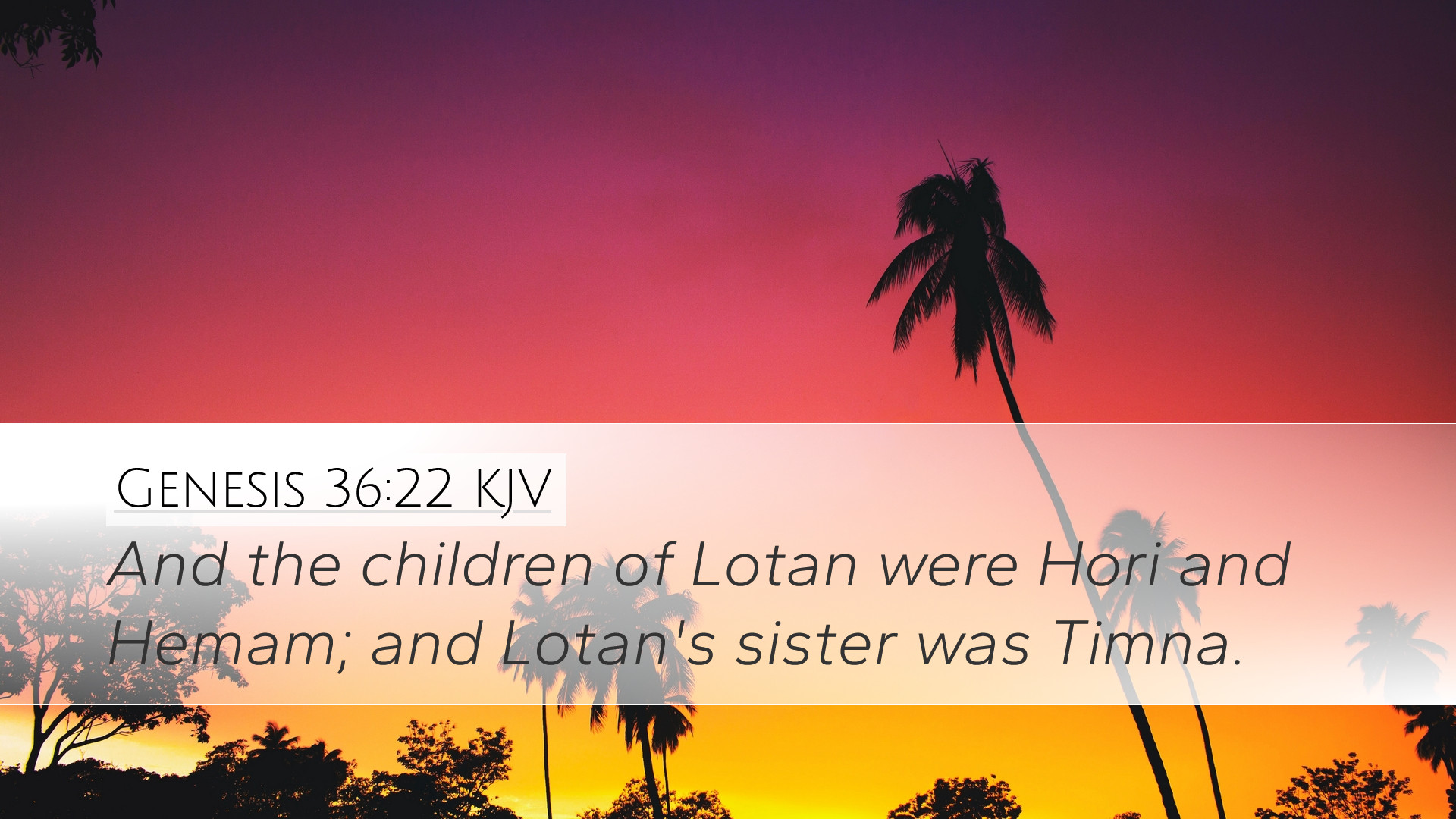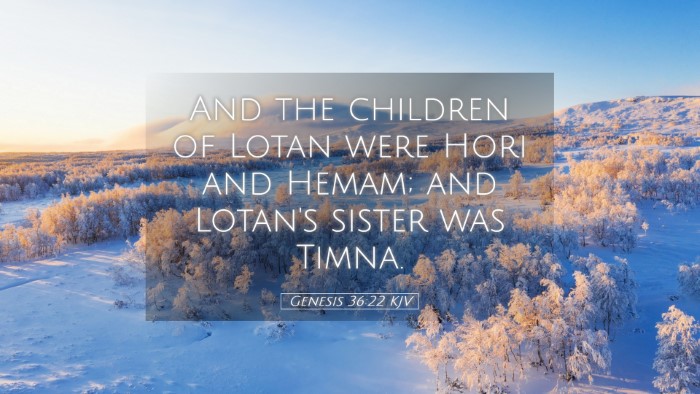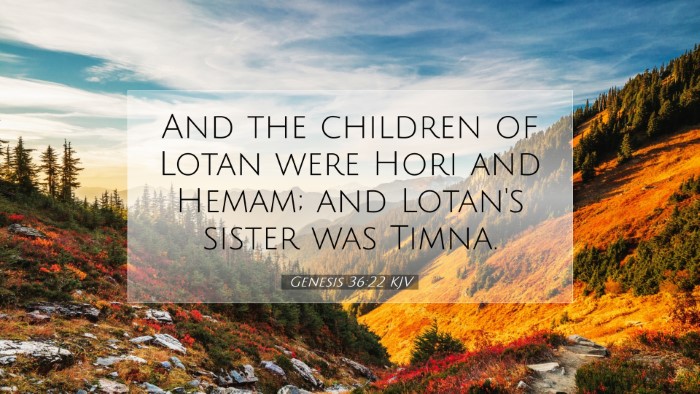Commentary on Genesis 36:22
Verse Overview
Genesis 36:22 reads: “The children of Lotan were Hori and Hemam; and Lotan's sister was Timna.” This verse is situated within the genealogical account of Esau, providing insights into the descendants of Esau and the surrounding nations. The mention of Lotan, Hori, and Hemam is significant for understanding the history and relationships of the Edomites.
Contextual Analysis
Historical Context
The context of Genesis 36 is paramount. This chapter details the lineage of Esau, also known as Edom, elaborating on the tribal and familial structures that emerged from his descendants. This genealogy is essential for tracing the history of the Edomite people, an important nation in relation to Israel.
Commentary Insights
Matthew Henry's Perspective
In his commentary, Matthew Henry emphasizes the role of genealogies in Scripture, noting how they serve to connect narratives and illustrate God's promises through the lineage of His chosen people. He observes that the names mentioned often indicate significant characteristics of the tribes they represent.
Albert Barnes' Observations
Albert Barnes elaborates by analyzing the names “Hori” and “Hemam,” suggesting that the name Hori relates to their characteristics as Horites, the inhabitants of the land before the Edomites. This indicates a blending of cultures and families, further highlighting the intricate history of the Edomite people and their origins.
Adam Clarke's Insights
Adam Clarke provides further elucidation by discussing the significance of Timna in this verse. He notes that Timna was not only Lotan's sister but is also mentioned in other genealogical lists, and she is linked to the theme of intermarriage among clans, which speaks of broader social practices in ancient cultures.
Theological Significance
This verse, like many in this chapter, has profound theological implications. The genealogy reflects God’s sovereignty in establishing nations and peoples. The narrative acknowledges the complexity of familial relationships and the interconnectedness of different tribes. It invites deeper reflections on God's plans and purposes through the lineage of the patriarchs.
Lessons for Today
- Recognition of Heritage: Understanding one’s spiritual and physical heritage can deepen one’s faith journey.
- The Importance of Community: Just as these genealogies reflect a web of relationships, so too do communities today influence individual lives and spiritual development.
- God’s Sovereignty: This passage reassures believers that God governs history and human relationships with purpose and intention, shaping the world for His glory.
Conclusion
Genesis 36:22 may appear as a simple genealogical note, yet it encapsulates much about the fabric of ancient societies and provides rich theological reflection on the interconnectedness of God’s people. As pastors, students, theologians, and scholars delve into this verse, they should be reminded of how such passages shape our understanding of God’s redemptive narrative throughout Scripture.


